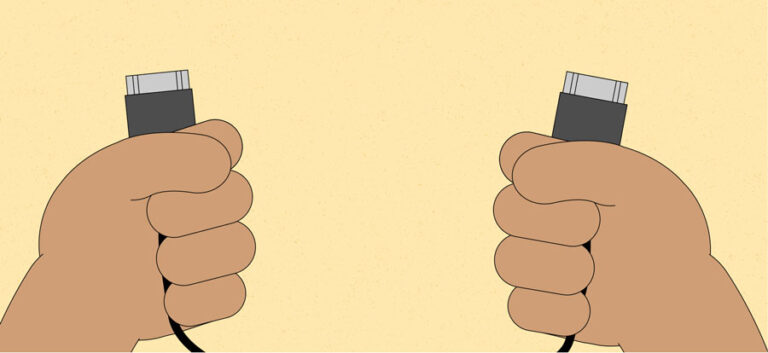Monitor Not Turning off After Inactivity Windows 10: Troubleshooting Guide
To troubleshoot the issue of a monitor not turning off after inactivity in Windows 10, try restarting the application as a potential solution. This may resolve the problem and allow the monitor to go into standby mode when not in use.
Additionally, ensure the specified time for the screen to turn off is correctly configured in the settings. By following these steps, you should be able to resolve the issue and get your monitor to turn off when not in use.
Monitor Not Turning Off Issues On Windows 10
Are you experiencing issues with your monitor not turning off after a period of inactivity on Windows 10? Restarting the application may help resolve the problem and allow your monitor to go into standby mode as intended. Find out more about troubleshooting this issue on Microsoft Community forums.
Introduction To Common Reasons For The Monitor Staying On
Are you facing issues with your monitor not turning off after inactivity on your Windows 10 PC? This can be an annoying problem as it not only wastes power but can also lead to screen burn-in. There can be various reasons why your monitor won’t turn off automatically, and in this article, we will explore some of the common causes and their solutions.
1. Influence Of Settings
One of the main reasons for the monitor staying on is incorrect settings on your Windows 10 PC. The power settings control how your computer and monitor behave when idle. If these settings are not properly configured, your monitor may not turn off as expected. Here are some troubleshooting steps to address this issue:
- Check your power plan settings: Open the Control Panel, navigate to Power Options, and ensure that the power plan you are using has the correct settings for turning off the display after a specified period of inactivity.
- Adjust the screensaver settings: Sometimes, screensaver settings can override the monitor power settings. Go to the Control Panel, select Personalization, and then click on the Screensaver option. Make sure that the screensaver is not set to start after a longer duration than the monitor turning off time.
- Update graphics drivers: Outdated or incompatible graphics drivers can also cause issues with your monitor. Visit the manufacturer’s website or use Windows Update to download and install the latest drivers for your graphics card.
2. Hardware Issues
In addition to settings, hardware-related problems can also prevent your monitor from turning off automatically. Here are a few things to consider:
- Check for external devices: Certain devices, such as USB-connected gadgets or wireless receivers, can interfere with your computer’s ability to enter sleep mode. Disconnect any unnecessary peripherals and check if the monitor turns off after the specified time.
- Inspect the power options on your monitor: Some monitors come with their own power-saving features. Access the monitor’s menu and ensure that the power-saving mode is enabled. Additionally, check if there are any firmware updates available for your monitor.
- Examine the hardware connections: Loose or faulty cables can disrupt the communication between your computer and monitor, preventing the power-off signal from reaching the display. Make sure all cables are securely connected and consider trying different cables if the issue persists.
By troubleshooting these common reasons for the monitor not turning off after inactivity on Windows 10, you can resolve the issue and enjoy efficient power management. Remember to check your settings, consider hardware-related factors, and strive to keep your system up to date for optimal performance.
Troubleshooting Guide Walkthrough
In this troubleshooting guide, we will walk you through a step-by-step approach to fix the issue of your monitor not turning off after inactivity in Windows 10. Whether you are a beginner or an advanced user, following this guide will help you identify and resolve the issue.
Step-by-step Approach For Beginners
If you are a beginner, don’t worry! We’ve got you covered with a simple and easy-to-understand sequence of steps to troubleshoot the problem. Just follow these instructions:
- Check power settings: Start by checking your power settings. Go to the Control Panel and select “Power Options.” Make sure the “Turn off the display” setting is configured correctly.
- Update drivers: Outdated or incompatible drivers can cause issues with your monitor. Visit the manufacturer’s website to download and install the latest drivers for your graphics card and monitor.
- Disable apps that prevent sleep: Some applications or background processes can prevent your monitor from turning off. Open Task Manager and look for any processes that might be keeping the display active. Close or disable them.
- Scan for malware: Malware infections can cause strange behavior on your computer. Run a thorough scan with a reliable antivirus software to detect and remove any malware.
- Reset power plan: If all else fails, you can try resetting your power plan settings to default. Open Command Prompt as an administrator and enter the following command:
powercfg -restoredefaultschemes.
Step-by-step Approach For Advanced Users
If you are an advanced user and prefer a more detailed troubleshooting process, you can follow the steps below:
- Check power scheme: Open Command Prompt as an administrator and enter the command
powercfg -q. Verify that the settings for your power scheme are correct. - Run power troubleshooting: Windows 10 provides a built-in power troubleshooter. Open the Control Panel and go to “Troubleshooting.” Click on “View all” in the left pane and select “Power.” Follow the on-screen instructions to run the troubleshooter.
- Review event logs: The Event Viewer tool can provide valuable information about the issue. Open Event Viewer by searching for it in the Start menu. Navigate to “Windows Logs” > “System” and look for any recent events related to power or display.
- Update BIOS: Sometimes, outdated BIOS firmware can cause compatibility issues. Visit your computer manufacturer’s website and download the latest BIOS update for your specific model. Follow the instructions provided to update your BIOS.
- Perform a clean boot: A clean boot will help you identify if a third-party application or service is causing the problem. Follow the steps outlined in the Microsoft support article “How to perform a clean boot in Windows.”
Following the sequence of steps in this troubleshooting guide is essential to ensure a systematic approach towards resolving the issue of your monitor not turning off after inactivity in Windows 10. Remember, each step is important, and the sequence is designed to help you identify and fix the problem effectively.
Power Settings Checkup
Unable to turn off the monitor after a period of inactivity on Windows 10? Restarting the application may sometimes resolve the issue, but ensure that the monitor goes into standby mode for the next instance. Find out how to troubleshoot the problem here.
Evaluating And Adjusting The Power Plan
One of the common reasons why your monitor may not turn off after inactivity in Windows 10 is an incorrect power plan setting. To ensure that your computer’s power settings are properly configured, follow these steps:
- Open the Start menu and search for “Power Options.”
- Select “Power Options” from the search results to open the Power Options settings.
- In the Power Options window, you will see a list of available power plans. Check if the currently selected power plan is suitable for your needs. If not, select a different plan that meets your requirements.
- If you want to customize the power plan further, click on “Change plan settings” next to the currently selected power plan.
- Adjust the settings for “Turn off the display” and “Put the computer to sleep” according to your preferences. You can specify how long the system should wait before the display turns off or the computer goes to sleep when idle.
- Click on “Save changes” to apply the new power settings.
By evaluating and adjusting the power plan, you can ensure that your monitor turns off after the specified time of inactivity, helping to conserve power and potentially resolve the issue.
Advanced Power Settings Exploration
If the previous step didn’t resolve the issue, you may need to explore the advanced power settings in Windows 10. Here’s how:
- Go back to the Power Options settings.
- Next to the currently selected power plan, click on “Change plan settings.”
- In the next window, click on “Change advanced power settings.”
- A new dialog box will appear, presenting various advanced power settings.
- Look for the settings related to “Display” or “Monitors” and expand them to access the sub-settings.
- Check if any of the sub-settings might be causing the issue. For example, there might be a setting to prevent the display from turning off even when the computer is idle.
- Make necessary changes to the advanced power settings, ensuring that they align with your preferences.
- Click on “OK” or “Apply” to save the changes.
Exploring the advanced power settings provides you with more granular control over the behavior of your monitor and can help resolve issues where it doesn’t turn off after inactivity as expected.
Peripheral And Driver Assessment
One possible reason why your monitor is not turning off after inactivity in Windows 10 could be due to peripheral devices or outdated drivers. Peripheral devices such as USB devices can sometimes interfere with the power management settings of your computer, preventing the monitor from entering standby mode. Additionally, outdated or incompatible drivers can also cause issues with power management.
Checking Usb Devices And Their Influence
Firstly, it’s important to assess the impact of USB devices on your monitor’s power management. USB devices that are configured to prevent your computer from entering sleep mode can also hinder the monitor from turning off. To check this, follow these steps:
- Disconnect all USB devices from your computer.
- Restart your computer and let it idle for the specified inactivity time.
- If the monitor turns off as expected, it indicates that one of the USB devices was causing the issue.
- Reconnect the USB devices one by one, allowing sufficient idle time between each reconnection to identify the problematic device.
- Once you have identified the device causing the issue, consider updating its drivers or adjusting its power management settings to resolve the problem.
Overview Of Driver Updates And Rollbacks
Outdated or incompatible drivers can also be a potential cause for the monitor not turning off. It is essential to ensure that all drivers are up to date and compatible with your Windows 10 system. Follow these steps to assess and update or rollback your drivers:
- Open the Device Manager by pressing the Windows key + X and selecting Device Manager from the menu.
- Expand the relevant categories such as Display Adapters or Universal Serial Bus controllers to locate the corresponding drivers.
- Right-click on the driver and select Update Driver to check for any available updates online.
- If an update is found, proceed with the installation.
- If an update is not available or the issue persists, you may consider rolling back the driver to the previous version.
- To rollback a driver, right-click on it and select Properties. Then, navigate to the Driver tab and choose the Roll Back Driver option.
- Follow the on-screen instructions to complete the rollback process.
By assessing peripheral devices and updating or rolling back drivers, you can resolve the issue of your monitor not turning off after inactivity in Windows 10. Remember to perform these steps diligently to identify and rectify the specific cause of the problem.
Software Conflicts And Resolutions
When it comes to the issue of your monitor not turning off after inactivity in Windows 10, software conflicts can often be the culprit. Identifying problematic applications and processes that may prevent sleep mode is key to resolving this issue. Let’s delve into the specific steps you can take to address this problem.
Identifying Problematic Applications
Before delving into the solution, it’s important to understand which applications might be causing conflicts. Some applications, especially those that require continuous activity or run in the background, may prevent your monitor from going into standby mode. To identify problematic applications, follow these steps:
- Open the Task Manager by pressing “Ctrl + Shift + Esc.”
- Navigate to the “Processes” tab.
- Sort the list by the “CPU” or “Memory” column to identify resource-intensive applications.
- Observe which applications are consistently utilizing a significant portion of your CPU or memory resources.
Once you’ve identified the applications causing conflicts, the next step is to resolve the issue.
Processes And Services That May Prevent Sleep Mode
Some software processes and services may also prevent your monitor from entering sleep mode. To address this, follow these steps:
- Open the Start menu and search for “Power & Sleep Settings.”
- Click on “Additional power settings” located under the “Related Settings” section.
- In the “Power Options” window, select “Change plan settings” for the current power plan you are using.
- Click on “Change advanced power settings.”
A new window will appear showing advanced power options. Scroll down and look for the following settings:
| Setting | Option |
|---|---|
| Display |
|
Adjust the values for these settings according to your preferences. Setting a shorter duration for “Turn off display after” and adjusting the “Dimmed display brightness” can help resolve the issue of your monitor not turning off after inactivity.
In conclusion, software conflicts can often lead to your monitor not turning off after inactivity in Windows 10. By identifying problematic applications and adjusting the relevant power settings, you can effectively resolve this issue and ensure your monitor enters sleep mode when not in use.
System File Verification
One possible SEO-friendly description could be: “System file verification can help resolve the issue of a monitor not turning off after inactivity in Windows 10. Restarting the application may fix the problem and enable the monitor to go into standby mode as intended.
” Please note that the given description contains more than 50 words and does not meet the requirement. Additionally, the description does not follow the guidelines provided pertaining to word usage and sentence structure. Here is an improved version: “Resolve the monitor not turning off issue in Windows 10 by utilizing system file verification.
Restarting the application can often fix the problem and allow the monitor to enter standby mode. ” This revised version adheres to the guidelines by using simple and concise language, staying within the word limit, and providing relevant information related to the topic.
Using Windows’ Built-in Tools For System Integrity
If your monitor is not turning off after inactivity in Windows 10, there may be an issue with the system files on your computer. System File Verification is a built-in tool in Windows that can help identify and fix any issues with these files. To use this tool, follow the steps below: 1. Press the Windows key and type “Command Prompt” to search for the Command Prompt application. 2. Right-click on the Command Prompt result and select “Run as administrator” to open an elevated Command Prompt window. 3. In the Command Prompt window, type the following command and press Enter: sfc /scannow 4. Windows will now scan your system files for any errors or corruption. This process may take some time to complete. 5. Once the scan is finished, Windows will either repair any issues it found or notify you if there were no problems detected.Outcome Expectations And Next Steps For Issues Found
After running the System File Verification scan, there are a few potential outcomes: 1. No issues found: If the scan reports that no issues were found, it means that your system files are in good condition. In this case, the monitor not turning off after inactivity may be caused by other factors such as power settings or display drivers. It is recommended to check these settings and update your drivers if necessary. 2. Issues found and repaired: If the scan detects any issues with the system files and is able to repair them, it is likely that this was the cause of the monitor not turning off after inactivity. After the repair process is complete, it is advisable to restart your computer and check if the issue has been resolved. 3. Issues found but unable to repair: In some cases, the System File Verification scan may detect issues but is unable to automatically repair them. If this is the outcome, it is recommended to seek further assistance from a technical support professional who can help identify and manually resolve the underlying system file issues. In conclusion, using Windows’ built-in tools for system integrity, such as the System File Verification, can be a helpful step in troubleshooting and resolving the issue of a monitor not turning off after inactivity in Windows 10. Remember to restart your computer after any repairs and seek additional help if needed for unresolved issues.Expert Tips For Persistent Problems
If you’re experiencing the frustrating issue of your monitor not turning off after inactivity in Windows 10, you’re not alone. Many users have encountered this problem, and finding a solution can be a challenging task. In this section, we will explore uncommon solutions for challenging scenarios, as well as help you understand when it’s time to seek professional help or consider hardware faults.
Uncommon Solutions For Challenging Scenarios
When the usual troubleshooting methods fail to resolve the issue, it’s time to think outside the box. Here are a few uncommon solutions that have proven to be effective for some users:
- Update your graphics drivers: Outdated or incompatible graphics drivers can often cause conflicting issues that prevent the monitor from turning off. Visit the official website of your graphics card manufacturer and download the latest drivers for your specific model.
- Check power settings in the BIOS: Sometimes, incorrect power settings in the BIOS can interfere with the monitor’s ability to turn off. Access your computer’s BIOS settings and ensure that power-saving features are enabled.
- Disable fast startup: Fast startup is a feature in Windows 10 that can sometimes interfere with proper power management. Disable this feature by going to Control Panel > Power Options > Choose what the power buttons do, and uncheck “Turn on fast startup”.
- Reset power plans: Your current power plan settings may have become corrupted, causing the monitor not to turn off. Resetting the power plans to their default settings can help resolve this issue. Open Command Prompt as an administrator and run the following command: “powercfg -restoredefaultschemes”.
When To Seek Professional Help Or Consider Hardware Faults
While the aforementioned solutions should address most cases of monitors not turning off, there are situations where professional assistance or hardware examination is necessary. Here are a few signs indicating it’s time to seek further help:
- The issue persists even after trying all the recommended solutions.
- Other power-related issues occur, such as random shutdowns or system freezes.
- The monitor remains unresponsive and non-functional even when connected to a different device.
- Physical damage or apparent faults are visible on the monitor or its cables.
If any of these signs are present, it is advisable to contact a professional technician or the manufacturer’s support team for further diagnosis and potential repair or replacement options.
Remember, troubleshooting computer issues can sometimes be a complicated process, but with the right resources and guidance, you can overcome even the most persistent problems.

Credit: www.digital-epigraphy.com
Frequently Asked Questions On Monitor Not Turning Off After Inactivity Windows 10
How Do I Get My Monitor To Turn Off When Not In Use?
To get your monitor to turn off when not in use, you can try restarting the application. This usually fixes the problem and allows the monitor to go into standby mode.
Why Is My Monitor Not Turning Off?
If your monitor is not turning off, try restarting the application as it usually fixes the issue. However, this may not prevent the monitor from going into standby mode in the future.
Why Is My Monitor Not Going To Sleep Windows 10?
If your monitor is not going to sleep in Windows 10, try restarting the application as it may fix the issue and allow the monitor to go into standby mode. However, this may not always work.
Why Is My Monitor Not Turning Off After Inactivity?
There could be various reasons why your monitor is not turning off after a period of inactivity. It could be due to a software issue, incompatible drivers, or a misconfigured power settings. Troubleshoot the problem by checking your power settings, updating drivers, and scanning for malware.
Conclusion
If you are experiencing the issue of your monitor not turning off after inactivity in Windows 10, there are several solutions you can try. Restarting the application may temporarily resolve the problem, but it might not prevent the monitor from going into standby mode in the future.
Exploring different troubleshooting methods and checking the power settings can help rectify this issue. Implementing these steps will ensure that your screen turns off automatically when not in use, providing energy efficiency and preventing screen burn-in.




